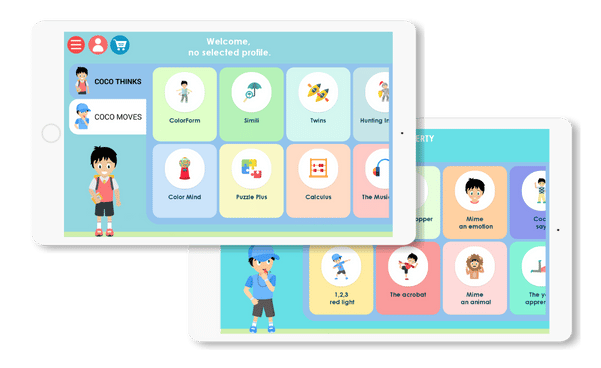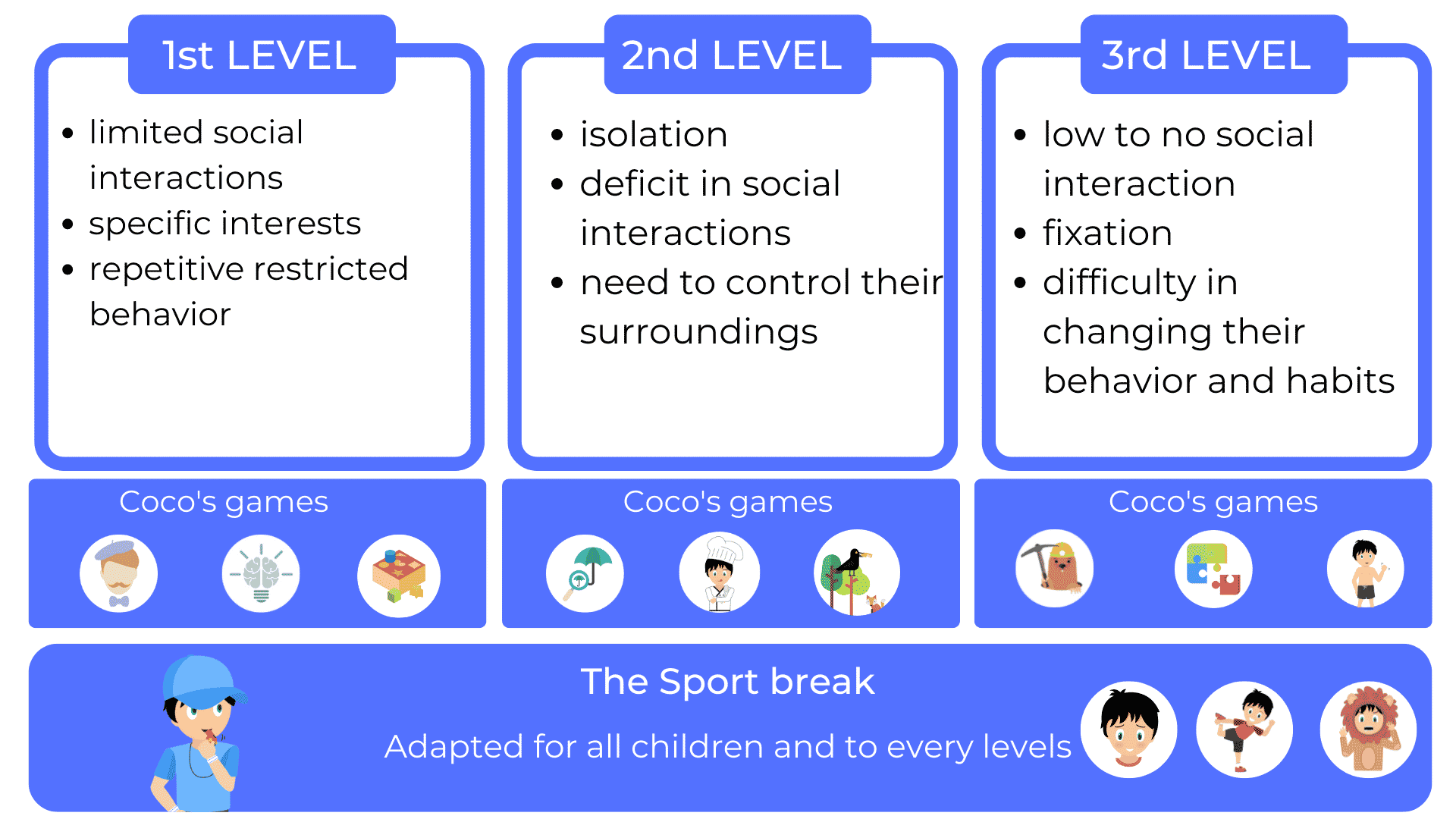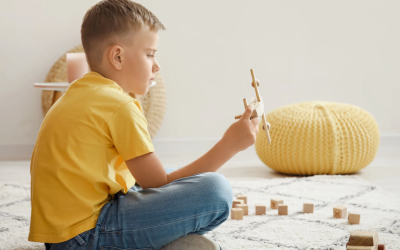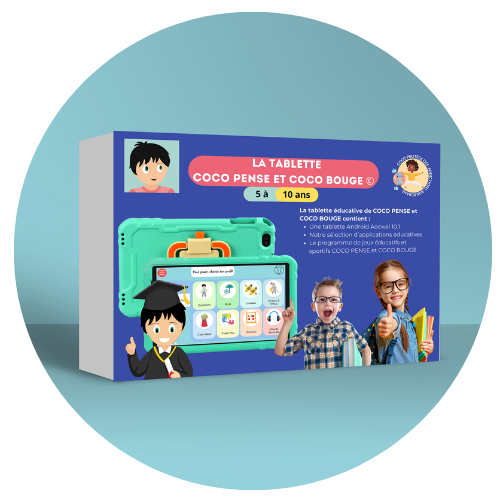Autism is a developmental disorder that affects children’s communication, social interaction and behavior. For parents of autistic children, it’s essential to find activities that stimulate their development while respecting their specific needs.
Sensory activities play an important role in the development of children with autism, helping them to develop their sensory, cognitive and communication skills. In this article, we’ll explore different sensory activities suitable for children with autism and their benefits for their development.
The benefits of sensory activities for autistic children
Sensory activities offer autistic children a stimulating and enriching experience that promotes their overall development.
Here are some of the main benefits of sensory activities:
-
Sensory stimulation
Sensory activities involve the senses of autistic children, such as sight, hearing, touch, smell and taste. This helps them explore and interact with their environment, enhancing their sensory perception.
-
Cognitive development
Sensory activities stimulate autistic children’s cognition by encouraging them to observe, problem-solve, classify and associate objects, thereby promoting creative thinking and problem-solving.
-
Communication and language
Sensory activities can facilitate communication and language in autistic children. By stimulating their senses, these activities encourage them to express themselves, share their experiences and develop their vocabulary.
-
Reduced anxiety
Sensory activities can help reduce anxiety and stress in autistic children by offering them a way to relax and calm down. These sensory activities are often soothing and comforting for them.
-
Social skills development
Sensory activities can be carried out in groups, enabling autistic children to develop social skills such as sharing, taking turns and interacting with others.
Sensory activities for autistic children
Sensory activities offer many benefits to children with autism, stimulating their sensory, cognitive, communicative and social development. By offering a variety of adapted activities, parents and education professionals can help these children to flourish and interact better with their environment.
It’s important to note that every child with autism is unique, and it’s essential to take their individual preferences and needs into account when choosing sensory activities. Observe the child’s reactions, adjust activities according to his or her interests and limits, and make sure you create a calm, comfortable environment to foster engagement and well-being.
-
- Sensory tray: Prepare a tray filled with different sensory materials such as sand, seeds, rice or pasta. Let the child explore and play with the different materials, using his hands or tools such as spoons or brushes. This encourages tactile stimulation and sensory discovery.
 
-
- Sensory paint: Use special paint for sensory activities, which offers a different and interesting texture. Children can use their fingers or brushes to paint and experiment with different tactile sensations.
 
- Playing with light: Use lamps, string lights or light-up toys to create lighting effects in a dark room. Children with autism are often fascinated by light effects and can spend a lot of time looking at them, which stimulates their visual perception.

4. Aromatic activities: Use essential oils or natural perfumes to create olfactory activities. For example, you can create jars of flavored jelly or lavender sachets. Children can smell the different fragrances and discover olfactory sensations.
5. Water play: Water activities provide tactile and visual stimulation. Fill a tub with water and add floating toys or objects to manipulate. Children can splash, pour and experiment with different water textures.
6. Music and dance: Music stimulates both hearing and movement. Organize music sessions where children can listen to music, play simple instruments or dance. This encourages motor coordination and emotional expression.

7. Handling equipment: Suggest manipulative games such as puzzles, cubes or stacking shapes. These activities encourage hand-eye coordination, concentration and the development of cognitive skills.
8. Tactile activities: Prepare boxes of different textures (e.g. sand, clay, feathers, fabric) and encourage children to explore and touch the different materials. This stimulates their sense of touch and develops their sensory perception.
9. Gardening offers a complete sensory experience, involving touch, smell and sight. Children can plant flowers, touch the soil, smell the plants and watch them grow.
10. Building games: Building games, such as blocks or LEGOs, stimulate creativity, motor coordination and problem-solving. Children can build structures, experiment with shapes and textures, and develop their logical thinking skills.

11. Outdoor sensory exploration: Encourage children to explore nature and the outdoor environment using their senses. They can touch the bark of trees, listen to the sounds of nature, smell flowers and observe the colors and shapes of plants.
12. Sensory ball games: Offer sensory balls of different textures, sizes and colors. Children can throw, catch, roll or squeeze them to discover different tactile sensations.
13. Kitchen activities: Invite children to take part in simple kitchen activities, such as mixing ingredients, kneading dough or decorating cookies. This stimulates their sense of taste, touch and smell, as well as fostering their independence.
14. Artistic activities: Encourage children to express themselves artistically using different materials such as paint, chalk, felt-tip pens or collage. This stimulates their creativity, fine motor skills and aesthetic appreciation.

My name is Johanna, and I’ve been a specialized educator for 7 years, mainly working with autistic children. My career in this field has been both demanding and incredibly rewarding. Every day, I witness the progress and moments of joy that our sensory activities bring to these extraordinary children.
Working with autistic children has its challenges, but I firmly believe that every child deserves a chance to develop and learn in his or her own unique way. Sensory activities are a valuable tool in our toolbox, enabling children to connect with their environment in a way that is comfortable and familiar to them.
One of my favorite activities is to create “sensory zones” in our classrooms. These zones are specially designed to meet the individual needs of each child. For example, we have a kinetic sand zone for those who like the feel of sand between their fingers, a soft light zone for those looking for soothing visual stimulation, and a sensory cushion zone for those who need body pressure.
To see a child enter one of these zones and engage fully in a sensory activity is an incredible experience. The resulting smiles and laughter are priceless. This goes far beyond academic learning; it’s a real emotional and sensory connection that takes place.
In addition to sensory zones, we also use tools such as sensory swings, footbaths with marbles, and even sand and water games. Every child has his or her own preferences, and our job is to discover and integrate them into our educational program.
I remember one child in particular, Lucas, who was initially non-verbal and had difficulty communicating his needs. Through sensory activities such as hand-painting, light massage and water play, we were able to help him develop his communication skills and gradually open up to others. Watching Lucas blossom and hearing his first words was one of the most moving moments of my career.
Ultimately, working with autistic children and using sensory activities requires patience, creativity and love. Every little step forward is a victory, and I’m proud to be part of this dedicated team that helps make these children’s lives richer and more fulfilling. Sensory activities are much more than just a means of teaching, they’re a gateway to the world for these children, and it’s a privilege to accompany them on their journey.
15. Sensory activities on the tablet with COCO
Tablet-based sensory activities offer a fascinating opportunity for children with autism to explore and learn in an interactive environment adapted to their specific needs. These applications are designed to stimulate several senses at once, using images, sounds, vibrations and even tactile interactions to create an immersive experience. They can help strengthen hand-eye coordination, develop concentration and encourage communication, while respecting each child’s individual rhythm. Tablet-based sensory activities are an invaluable tool for educators and parents alike, as they enable children’s learning experiences to be personalized and tailored to their sensory preferences, promoting their overall development in an engaging and fun way.
With the COCO program, discover over 30 adapted cognitive games, and explore : Perce-Ballons, L’oreille Musicale, yoga, dance… a whole host of ready-made activities that require no preparation!
By regularly offering appropriate sensory activities, parents and professionals can help to stimulate the overall development of autistic children, boosting their self-confidence and promoting their self-fulfilment. Sensory activities provide a safe, enjoyable space where children can explore, learn and grow at their own pace.
Take the time to explore different sensory activities and discover which ones work best for your child. Be patient, encouraging and open to discovery. By using these sensory activities as developmental tools, you can support your autistic child in his or her growth journey and help him or her reach his or her full potential.
Other articles that might interest you:
Using Technology to Enhance Communication in Autism Speech Therapy
Autism Spectrum Disorder (ASD) presents unique challenges in communication, making speech therapy an essential...
Effective Autism Behavior Therapy: Improving Outcomes
Autism is a complex neurodevelopmental disorder that affects individuals in various ways. It is characterized by...
Autism Therapy at Home: Effective Strategies
Autism Spectrum Disorder (ASD) is a neurodevelopmental disorder that affects individuals in various ways. It is...








